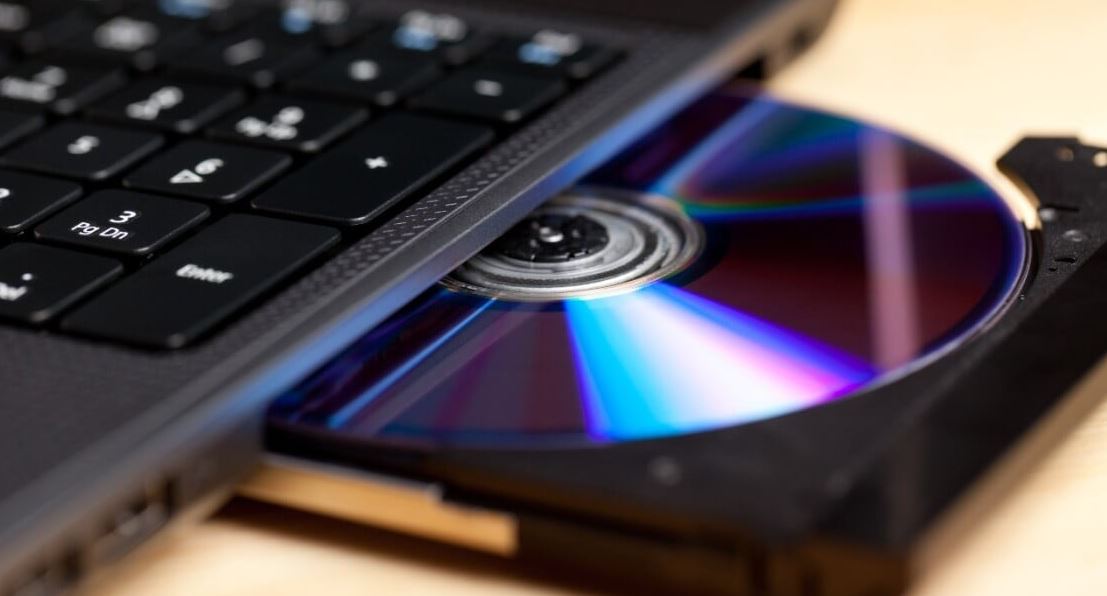It’s time to replace the DVD drive in your laptop.
Laptop CD/DVD Drives – What You Need to Know
At Computer Repair Miami, we often get questions about laptop CD and DVD drives—how they work, how they compare to desktop drives, and how to troubleshoot them. Here’s everything you need to know.
Laptop vs. Desktop Drives
Laptop CD/DVD drives function much like their desktop counterparts, with one key difference: they’re thinner to fit the compact design of laptops. While they typically offer the same basic functionality—reading and writing CDs or DVDs—they may lack some of the advanced features found in desktop drives.
For example, dual-layer drives, which allow writing to double-capacity DVDs, are common in desktops but less so in laptops. However, dual-layer laptop drives are starting to hit the market, so keep an eye out if you need that capability.

Drivers and Codecs: Don’t Leave Home Without Them
To get the most out of your CD/DVD drive, it’s essential to have the right drivers installed. This includes:
-
Hardware drivers provided by the laptop manufacturer
-
Software drivers required by specific programs
-
Codecs, which are additional components that allow playback of certain video and audio formats
Codecs in particular can be tricky—they’re often not installed by default and only get added when a specific program needs them. Some can be difficult to track down, especially if you’re on the road without an internet connection.
Pro tip: Before you travel, test your media-related programs. Try burning a disc, watching a DVD, playing AVI or MPEG files, and listening to music. It’s better to identify any issues now than to be 35,000 feet over the Pacific, unable to watch that movie you brought just for the flight.
Burning Software: Test It First
If you plan to use your laptop to burn CDs or DVDs, be sure to test your burning software before you hit the road. The last thing you want is to arrive at your work or vacation destination, only to discover that your software doesn’t work—or worse, that the drive doesn’t function properly.
Hot-Swapping Optical Drives
Many laptops allow you to swap out the CD/DVD drive while the system is powered on, much like a USB flash drive. You can use the “Safely Remove Hardware” icon in the system tray to eject it safely.
Why would you remove the drive? Some laptops offer interchangeable bays—for example, you might swap out the optical drive for a floppy drive or another accessory. This flexibility is great for users who still rely on legacy media or prefer modular hardware.
Simply stop the device, eject it, and insert the replacement. Your laptop’s operating system will detect and activate the new hardware automatically.
Signs of a Failing CD/DVD Drive
While CD/DVD drives are generally reliable, they do fail from time to time. Signs of a failing drive include:
-
The tray won’t stay closed
-
The drive fails to read multiple discs (CDs or DVDs)
-
Discs spin but no content is detected
Unfortunately, these drives are not repairable. If your laptop is still under warranty, contact the manufacturer for a replacement. Be aware that policies vary—some manufacturers may provide a free replacement, while others may charge. Also, don’t throw away the old drive until the replacement arrives; some manufacturers require you to send it back.
Cleaning Tips
If your drive seems sluggish but not completely broken, it might just need cleaning. However, use extreme caution:
-
Only clean the laser lens with isopropyl alcohol and a lint-free Q-tip.
-
Avoid Q-tips that leave behind cotton strands—even a single invisible fiber can render the drive inoperable.
Whether you’re trying to fix a finicky drive or planning to upgrade, Computer Repair Miami is here to help. Reach out if you need diagnostics, replacements, or just expert advice on your laptop’s optical drive.
